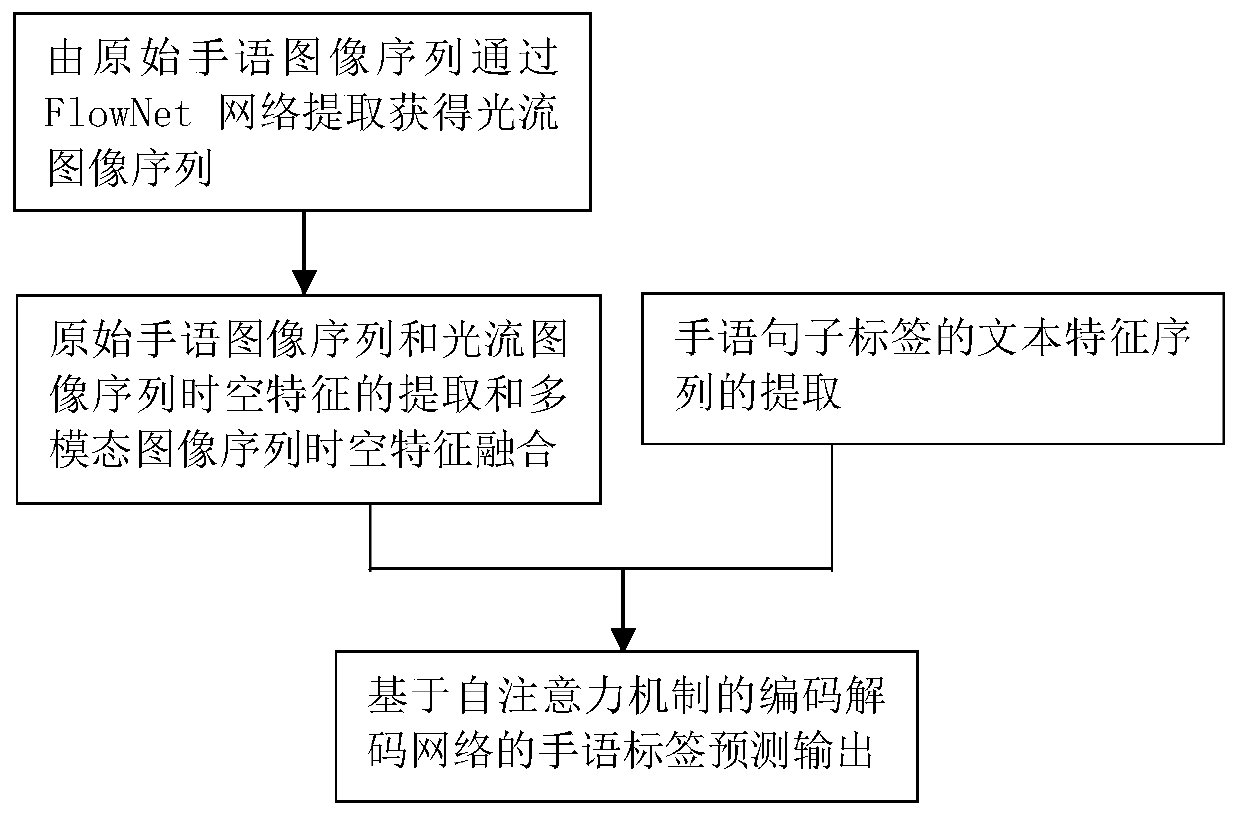Continuous sign language recognition method
A sign language, image sequence technology, used in character and pattern recognition, instrumentation, biological neural network models, etc.
- Summary
- Abstract
- Description
- Claims
- Application Information
AI Technical Summary
Problems solved by technology
Method used
Image
Examples
Embodiment
[0181] In the first step, the optical flow image sequence is obtained by extracting the original sign language image sequence through the FlowNet network:
[0182] Read in the video P01_s1_00_0_color.avi composed of n=228 shots, the video size is 112×112 pixels, and the input original sign language image sequence X=(x 1 ,x 2 ,...,x n ), wherein, n=228 is the frame number of the image sequence (the same below), x 1 、x 2 ,...,x n They are the first frame, the second frame, ..., the nth frame of the original sign language image sequence, and the optical flow field between adjacent images is extracted through the FlowNet network, and the optical flow field between each sign language image sequence forms an optical flow image sequence, The obtained optical flow image sequence containing n frames of images is X'=(x' 1 ,x' 2 ,...,x' n ), where x' 1 , x' 2 ,...,x' n Respectively, the first frame, the second frame, ..., the nth frame of the optical flow image sequence;
[01...
PUM
 Login to View More
Login to View More Abstract
Description
Claims
Application Information
 Login to View More
Login to View More - R&D
- Intellectual Property
- Life Sciences
- Materials
- Tech Scout
- Unparalleled Data Quality
- Higher Quality Content
- 60% Fewer Hallucinations
Browse by: Latest US Patents, China's latest patents, Technical Efficacy Thesaurus, Application Domain, Technology Topic, Popular Technical Reports.
© 2025 PatSnap. All rights reserved.Legal|Privacy policy|Modern Slavery Act Transparency Statement|Sitemap|About US| Contact US: help@patsnap.com



